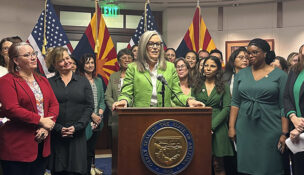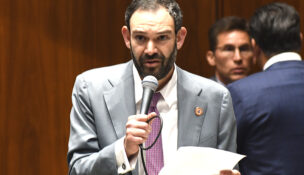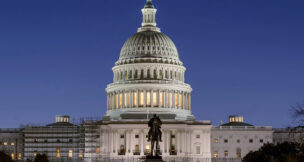Budget 101
Arizona Capitol Reports Staff//May 19, 2006//[read_meter]
Lawmakers have their own maze of job-related jargon when they talk about state programs and the process of creating laws.
Bills get “dropped” (filed with the chief clerk), go through COW (Committee of the Whole) and may be replaced with a “striker” (strike-everything amendment).
The legislative language is no more apparent than in budget discussions, when the uninitiated can be left dizzy by a barrage of acronyms and shorthanded references to departments, programs and funding structures.
Here are some of the commonly used terms and their definitions:
All funds: Spending from all sources available to the state government, including money supplied by the federal government. The size of the entire state budget is more than $20 billion.
Allocation: Money that is actually given to a state agency or program.
Appropriation: Money that is budgeted for a state agency or program.
ASRS: The Arizona State Retirement System, of which most state employees are members.
Box: The amount of money in the budget plan available for legislative or executive initiatives. (Usage: “How big is the box this year?”)
BRB: Budget reconciliation bill, it is commonly pronounced as “burb.” These bills typically provide funding for legislative budget initiatives and set spending policy. (Usage: “Tax cuts will be in a BRB.”)
Ending balance: The amount of money a budget leaves unspent.
Executive: Refers to the governor. (Usage: “The Executive budget was released.”)
Feed bill: The general appropriations bill, it sets out the budgets for state agencies and appropriates both General Fund and other funds so state government can operate. (Usage: “The feed bill gives our department $5 million.”)
Fiscal note: The cost of a piece of legislation. (Usage: “Does this bill have a fiscal note?”)
Flores: The Flores v. State of Arizona lawsuit, in which a federal court ruled the state was violating federal education law by not properly funding English language learner programs. The case is still tied up in the courts.
Formula spending: Funding levels for state programs that are mandated by voter-approved initiatives or referendums and based on caseloads. Base spending for K-12 education and AHCCCS is determined by the number of participants and accounts for about half of the total General Fund budget.
FTE: Full-time employee.
FTSE: Pronounced “footsie,” it stands for full-time student equivalent. It is the number used to determine how much funding colleges and universities receive. (Usage: “What’s the FTSE count for Northern Arizona University?”)
General Fund: The portion of the state budget that is allocated by the Legislature. The money primarily comes from sales, private income and corporate income taxes. This year’s General Fund budget will be about $10 billion.
HURF: Highway User Revenue Fund, which is used primarily for state transportation projects.
JLBC: Joint Legislative Budget Committee.
Line-item veto: A veto that strikes only an appropriation but allows the remainder of the bill to become law.
Matching funds: Money given to the state by the federal government to supplement state funding for a program. (Usage: “The state receives three-to-one matching funds for this appropriation.”)
One-time: Refers either to revenues or expenditures, and denotes budget items that will only have an impact for one fiscal year.
Ongoing: Refers either to revenues or expenditures. Ongoing items — sometimes called permanent — are expected to impact budgets for several years, if not indefinitely.
OSPB: The Governor’s Office of Strategic Planning and Budgeting.
Prop 105: A clause in some legislation referring to Proposition 105, an initiative passed by voters in 1998 that prevents the Legislature from altering a voter-approved initiative or referendum without approval from three-quarters of the House and Senate. (Usage: “That bill needs a Prop 105 on it.”)
Prop 108: A clause in some legislation that refers to Proposition 108, an initiative passed by voters in 1992 that requires a two-thirds vote in both chambers to approve any legislation that increases state revenues. (Usage: “The Rules attorney said the bill needed a Prop 108.”)
Rainy Day Fund: Technically called the Budget Stabilization Fund, it is essentially the state’s savings account. Statute limits the balance of the fund to 7 percent of the total General Fund revenues.
STAN: State Transportation Acceleration Needs account, a proposal in this year’s budget to build more freeways.
Structural deficit: When the state budget has more permanent spending than permanent revenue in a given year. (Usage: “Funding that program will create a structural deficit in three years.”)
Supplemental: An appropriation that applies to the current fiscal year. (Usage: “The Legislature approved a supplemental for the Department of Corrections.”)
Trigger: A spending provision in the budget that will not occur unless revenues reach a specified level.

















